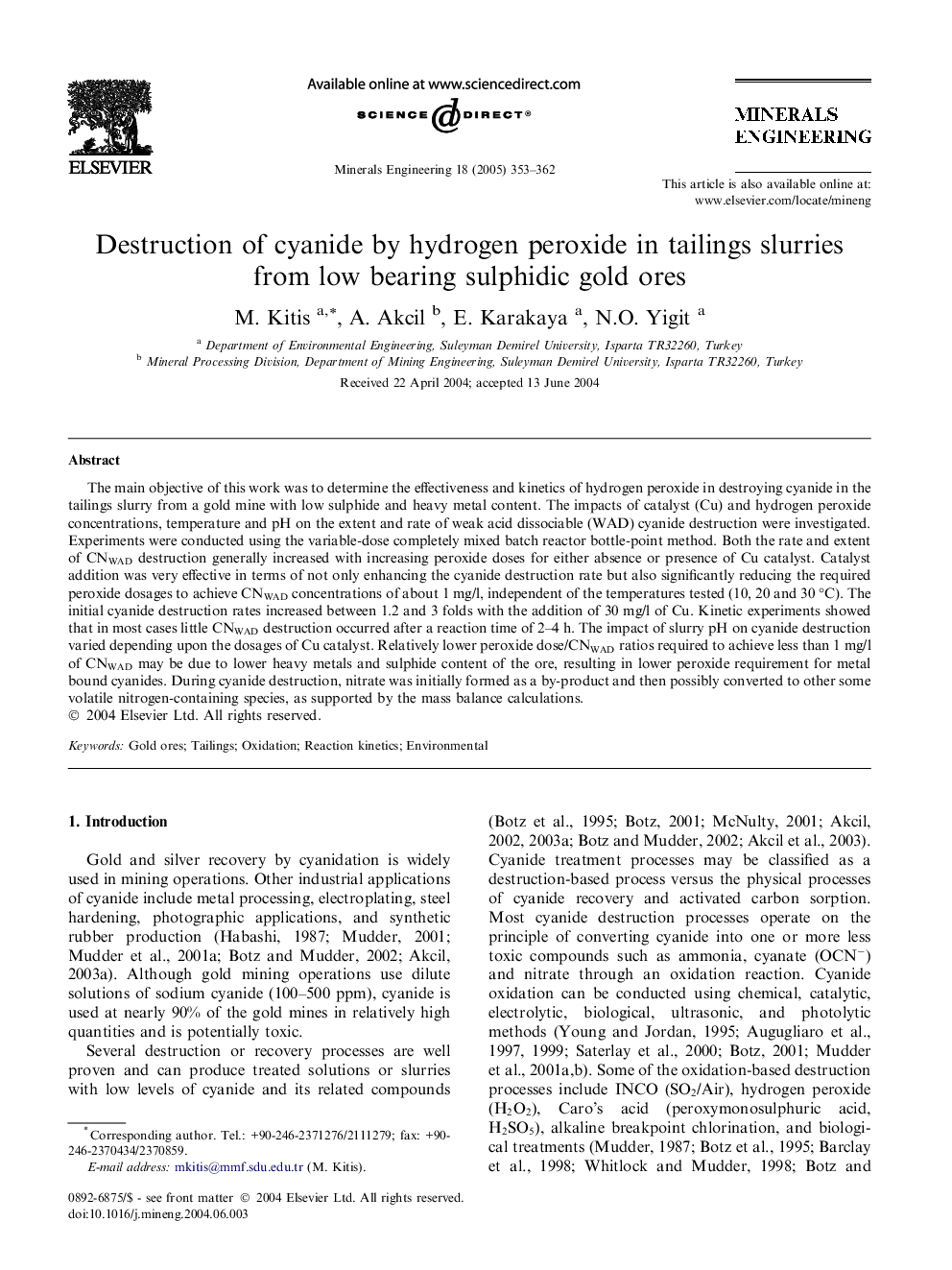| Article ID | Journal | Published Year | Pages | File Type |
|---|---|---|---|---|
| 10279928 | Minerals Engineering | 2005 | 10 Pages |
Abstract
The main objective of this work was to determine the effectiveness and kinetics of hydrogen peroxide in destroying cyanide in the tailings slurry from a gold mine with low sulphide and heavy metal content. The impacts of catalyst (Cu) and hydrogen peroxide concentrations, temperature and pH on the extent and rate of weak acid dissociable (WAD) cyanide destruction were investigated. Experiments were conducted using the variable-dose completely mixed batch reactor bottle-point method. Both the rate and extent of CNWAD destruction generally increased with increasing peroxide doses for either absence or presence of Cu catalyst. Catalyst addition was very effective in terms of not only enhancing the cyanide destruction rate but also significantly reducing the required peroxide dosages to achieve CNWAD concentrations of about 1 mg/l, independent of the temperatures tested (10, 20 and 30 °C). The initial cyanide destruction rates increased between 1.2 and 3 folds with the addition of 30 mg/l of Cu. Kinetic experiments showed that in most cases little CNWAD destruction occurred after a reaction time of 2-4 h. The impact of slurry pH on cyanide destruction varied depending upon the dosages of Cu catalyst. Relatively lower peroxide dose/CNWAD ratios required to achieve less than 1 mg/l of CNWAD may be due to lower heavy metals and sulphide content of the ore, resulting in lower peroxide requirement for metal bound cyanides. During cyanide destruction, nitrate was initially formed as a by-product and then possibly converted to other some volatile nitrogen-containing species, as supported by the mass balance calculations.
Related Topics
Physical Sciences and Engineering
Chemical Engineering
Chemical Engineering (General)
Authors
M. Kitis, A. Akcil, E. Karakaya, N.O. Yigit,
